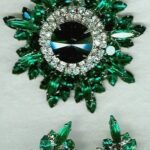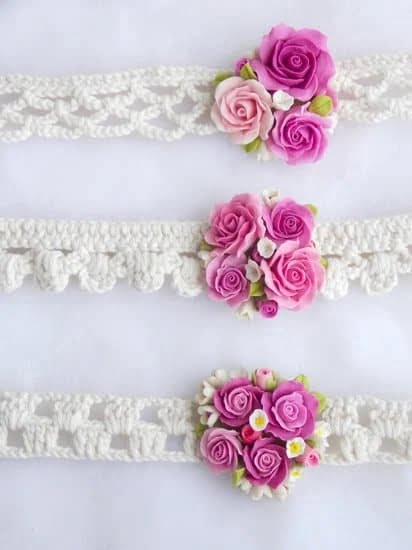Turquoise jewelry has been around for centuries and is believed to have many significances. The history of turquoise dates back more than 6,000 years and it has been used in a variety of different cultures for hundreds of years.
Turquoise was initially used by Native American tribes as a talisman to ward off evil. From the Aztec Indians in Mexico to the Native American tribes in the United States, turquoise jewelry has been worn and appreciated for its natural beauty worldwide.
In Ancient Egypt, turquoise jewelry was associated with fertility and renewal, representing healing and good luck. It was also given to individuals in order to protect them from harm or illness. Kings and rulers during this period adorned themselves in large amounts of Turquoise to show their status and wealth. In India, ancient symbols were often inscribed on Turquoise as talismans to attract positive forces into the wearer’s life bringing success, health & spiritual contentment.
Today, Turquoise is probably most widely used in Southwest America where it has become part of mainstream jewelry thanks largely to the influence of Navajo culture who continue to craft unique pieces today. This type of jewelry is often found at folk art galleries throughout the southwestern states showcasing incredible works made out of high quality stones such as Sleeping Beauty or Royston which come from local mines.
It’s not uncommon for these pieces to be handed down through generations as a family heirloom or become an item treasured throughout someone’s lifetime due to its sentimental meaning.
In addition, turquoise is becoming increasingly popular around the world due not only its cultural significance but also its beautiful look that can fit almost any wardrobe style or type making it an ideal choice when looking for new pieces for your own collection or as gifts for friends & family alike.
The History of Turquoise Jewelry
Turquoise jewelry is a timeless piece of art that has been used by civilizations throughout all different time periods. The beautiful and intricate gemstone is often treasured for its unique style and vibrant blue orbs.
Turquoise jewelry can be traced back to its origin in the Sinai Moutains in Egypt over 6,000 years ago when the first Pharaohs began to wear these precious pieces of art. Later on, Native Americans considered turquoise as their most valuable gem and they incorporated it in their spiritual rituals as well as in everyday life.
Throughout time, the use of turquoise has been highly appreciated by many cultures across the world. In Ancient Persia, Turquoise was said to bring joy and luck, and so it was used heavily for trading and decorating noble jewelry pieces.
In China, Turquoise was considered one of five lucky stones that were given different healing powers such as protection from bad energy or longevity depending on its color shading. During the Middle Ages, Europe adopted this beautiful trend of using turquoise in their jewelry making process.
Nowadays, turquoise is still very popular among many different contemporary culture across the world. From its historical importance in cultural backgrounds to its appearance as a fashion statement on modern runways; turquoise captures attention from all walks of life through its unique spiritual power and unparalleled aesthetics. Its modern use has become more decadent – set with diamonds or combined with other vibrant gems like opals or rubies – it gives an individual a truly luxurious feeling upon wearing them.
Turquoise is a classic stone known for symbolizing happiness, courage and strength which have attracted many generations over all these years to admire or wear such great pieces of art from ancient times until present day. It is no surprise why this kind of precious stone has stood strong amongst all these centuries – we hope it will still stands proudly for many more sublime decades to come.
Different Uses of Turquoise Jewelry
Turquoise jewelry has been used across many cultures and in many different forms for thousands of years. Ancient Egyptians were believed to be the first to use Turquoise for jewelry pieces, around 5500 BC. The Incas of Peru also crafted stunning necklaces, bracelets and other jewelry from turquoise during the government of Pachacuti.
Turquoise was seen as a symbol of power and status within royalty, those who wore it were seen as having great wealth or luck. Along with this idea, the antiquity sees it as providing protection from physical harm and spiritual strength. Bedouins in Africa would craft their own turquoise jewelry for special occasions or give it as a wedding gift.
It was also adopted by Native American tribes to grant health, luck, and prosperity out of respect for its beauty and rarity at that time. In fact, there is also evidence that each tribe (Pueblo’s) had their own unique kind of stones which matches a certain color which can be identified even now by others.
- Ancient Egyptians are believed to have started using Turquoise Jewelry around 5500 BC
- It was seen as a symbol of wealth or good luck amongst royalty
- Native American tribes saw Turquoise Jewelry as providing health, luck and prosperity
- The Incas crafted beautiful jewellery pieces out of Turquoise during the government of Pachacuti
- Bedouins in Africa would craft their own jewellery or give it away as wedding gifts
Today Turquoise Jewelry is more widely accessible than ever before due to technological advances in mining techniques allowing more mass-production at lower costs. It remains highly popular not only for its ornamental value but also because it helps promote self-expression when wearing them every day which is why they remain popular among celebrities such as Anne Hathaway, Reese Witherspoon, Taylor Swift, Kirsten Dunst, Gigi Hadid &Jessica Alba.
Its ability to evoke feelings and its unbounded versatility means something unique about your style can be expressed without sacrificing quality.
How Turquoise Jewelry is Made
Prehistoric Jewelry Making
The making of turquoise jewelry dates back to prehistoric times. Ancient societies used natural materials such as shells, bones, stones and minerals to create decorations for their homes and bodies. Turquoise, a semi-precious stone with its unique green-blue color, was one of the popular stones used in Ancient Egyptian and Persian cultures. These ancient civilizations favored turquoise for its vividness and believed it had special powers to ward off negative energies.
They also adorned their clothes, weaponry and gods with the gemstone. As early as 3000BCE there is evidence of turquoise being used in jewelry making. Archaeologists have uncovered many examples of primitively crafted rings made from unworked stones that are thought to be from this era.
Modern Jewelry Making
Today, many different techniques are used when crafting turquoise jewelry. The most common method is to cut the stone into thin slices or beads which can be then shaped into whichever design is desired. Gem cutters use technologies like ultrasound and lasers to get the perfect cuts while preserving the original integrity of the stone.
After cutting and shaping is complete it’s time for setting in metal or other substances. This can be done with prongs (a type of clamp that clasps down onto the metal), glue or a combination of both.
Healing Properties
Outside of looking good on people, many cultures believe that turquoise has healing properties – it is worn close to the body allowing energy blockages to dissolve over time thus restoring balance and harmony throughout life’s highs and lows. Those who choose to wear this beautiful gemstone enjoy will feel like they radiating protection as they walk through life – knowing that no matter what comes their way – they are shielded by its powers for strength, knowledge, happiness and love.
Different Styles of Turquoise Jewelry
Turquoise jewelry has been sought after for centuries and its traditional look and feel have made it an important part of history. As early as the 4th millennium BC, humans were wearing turquoise jewelry in the Middle East and the Turkestan (now Kazakhstan). The bright green or blue color of turquoise was thought to protect against evil spirits when placed on clothes or homes.
It was also believed to contain healing power, and many Native American tribes considered it to have great symbolic value. In Native American culture, turquoise is consistently connected with positive signs such as strength, fertility, and luck in life.
Throughout history, many different design patterns have been developed specifically for turquoise jewelry that vary in style from simple to elaborate. Turquoise jewelry can also be found in a variety of settings – from full rings to delicate pendants or charms.
Traditionally, a light-colored silver is often used with vibrant colored turquoise; this combination creates an eye-catching contrast while still keeping an elegant touch to the piece. Intricately adorned traditional Indian bracelets and necklaces particularly popularized this look but modern pieces take a more contemporary turn in design trends.
More ornate designs are now using mixed metals such as gold or rose gold combined with stones like opals that create unexpected colors or deluxe platinum bands paired with a range of stones that come together for an impressive combination. These days you can find unique pieces that embody both traditional values with a modern aesthetic aspect such as ‘feather earrings’ encrusted in eastern blue net stone along metal wire filigree frames.
Although there are endless variations out there stories created by talented artisans around the world, each one carries its own special sense of soulful charm and intrinsic protection power that so few gemstones offer.
So whether your style aligns itself with bold statements, or subtle accents of sparkle – wearing one-of-a-kind turquoise jewelry is sure way to celebrate personal growth and unique beauty regardless of occasion.
Different Materials Used For Turquoise Jewelry
Turquoise jewelry has a long and storied history that dates back thousands of years. The material used for turquoise jewelry was originally mined from areas mainly in Egypt, Persia, and China. When it was first discovered, turquoise jewelry was highly sought-after, with various rulers throughout the centuries competing to be able to purchase pieces of this beautiful stone. It was so desirable that some rulers even declared possession of it as a mark of status or power.
Different Materials Used For Turquoise Jewelry
Since antiquity, different materials have been used to replace the real turquoise stone and imitate its beauty. Plant or tree extracts such as cinnabar, which is made from the powdered ash of willow trees mixed with mercury salt were used in ancient times for imitations and still form part of some copies today.
Similarly jasper has been widely used as an imitation due to its similar coloration to turquoise when glossed. Stones such as green magnesite are also often utilized because their texture can be molded to resemble the famed gemstone very easily.
Modern Uses For Turquoise Jewelry
Today, turquoise jewelery remains popular among some communities around the world for its use in many different cultures and pieces like pendants, earrings, rings and necklaces continue to be worn on special occasions. The American Indians in particular favored turquois as a spiritual protection against ill health or evil demons, wearing it in earrings or neckrings for this purpose.
Meanwhile in Italy many bridal couples wear these traditional rings during their wedding ceremony where they are said to bring luck and prosperity to the couple’s union. In addition to its spiritual uses, today’s turquise remains much sought after due largely to its attractive blue shade making it ideal as jewellery component particularly when combined with sterling silver settings adding a naturally elegant look.
Caring For Turquoise Jewelry
Turquoise jewelry is an important and highly valued type of adornment, which can be traced back many centuries. Ancient civilizations believed that turquoise had spiritual properties, warding off evil and bringing luck and prosperity into the wearer’s life. Today, it is still very popular as a wearing accessory for both its beauty and purported spiritual qualities.
Turquoise jewelry comes in a variety of shapes, sizes, and materials – each one having unique qualities. Caring for this precious gemstone correctly is key to preserve its natural beauty. Here are some tips on how to care for your stunning turquoise jewelry:
- Clean your turquoise pieces often with warm water.
- Use a polishing cloth on the metal settings at least once a month.
- Shampoo will also help to clean your jewel if needed – just use it occasionally.
- Memorize the pH level of typical cleaners such as ammonia or soap so you don’t damage your jewels’ setting or color.
- Store each piece separately in tarnish-resistant containers wrapped in cloth, or place them inside their original packaging.
Some people also swear by certain rustic home remedies to keep their stones looking their best over time. While there has been little scientific research done about these methods, they certainly can’t hurt when used gently – just be careful not to scratch any of the surfaces.
These include using toothpaste and baking soda mixed with water directly onto the stone followed by thorough rinsing in clear water afterwards; olive oil; lemon juice; and window cleaner diluted with water sprayed lightly onto the stone from several feet away (this one should only be used on light colored stones).
Another method that has been passed down from generation to generation is rubbing wood ash into deeply produced crevices followed by gentle washing with lukewarm soapy water. Whatever method you choose make sure you use it sparingly and avoid roughness when handling the jeweled pieces.
Conclusion
Turquoise Jewelry has a long and deep history across many cultures around the world. Its origin dates back to the 5th millennium BC where it was considered a special gemstone. Ancient Egyptian, Mesoamerican, and Native American civilizations used turquoise for adornment, often including it in sacred ceremonies such as weddings and tribal rituals. In many ancient societies, Turquoise jewelry was believed to be gifts from the gods or spiritual messengers of good fortune.
The majestic blue stone’s appeal was first appreciated by the people of ancient Egypt who set it in gold jewelry during the 4th dynasty in 2500 BC. It is thought that Cleopatra, herself an avid wearer of this type of jewelry adorned her fingers with these stones set in precious metals made by master artisans from all over the world as she ruled her empire.
The Egyptians built vast necropolises filled with tombs decorated with large and finely detailed pieces of Turquoise jewelry indicating its importance as symbols of royalty and riches throughout that culture’s untold generations.
Turquoise remained popular through the ages all around the world but probably reached its peak in popularity when Western settlers discovered Arizona’s Sleeping Beauty Mine, which was named after the Sleeping Beauty mountains situated within close proximity to it, hosted one of the most valuable deposits found anywhere on Earth at that time.
It is still now broadly accepted as one of the world’s premier mining sites for natural turquoise still today so its obvious why this vibrant mineral became glued onto southwestern artistry like glue on tacky paper.
Worldwide however this beloved jewel continues to be widely sought after for its beautiful blue hues that range from pale sky blue to deep sapphire colors sought out by collectors ranging from those looking for gems purely for their aesthetic merit through to aficionados who consider these specimens based on how rare they are or where they originate from geographically speaking. It also remains an integral part of peoples traditional cultural attire across many Middle Eastern countries too.
Therefore no matter its purpose or who buys it turquoise jewelry has attained a place in our culture and serves as more than just a fashion accessory but rather a symbol of luck, fortune and grandeur throughout human history across all societies living today past and future.

Welcome to my jewelry blog! My name is Sarah and I am the owner of this blog.
I love making jewelry and sharing my creations with others.
So whether you’re someone who loves wearing jewelry yourself or simply enjoys learning about it, be sure to check out my blog for insightful posts on everything related to this exciting topic!





